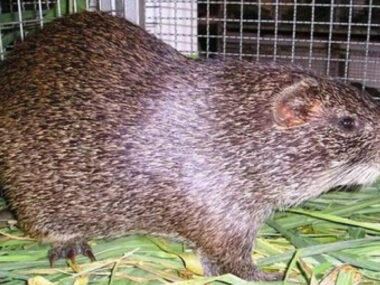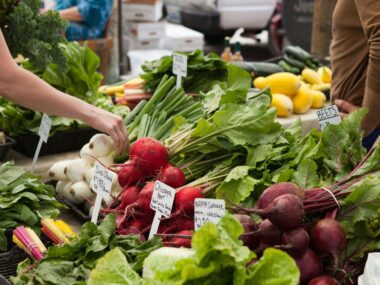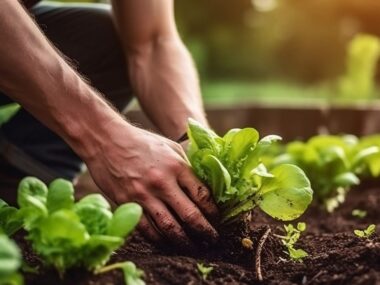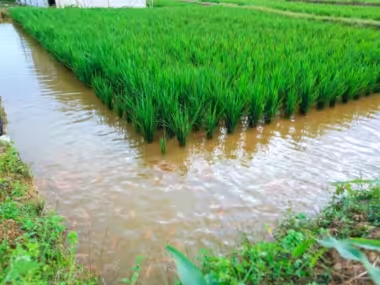The agricultural sector is at a transformative juncture, with innovative farming techniques revolutionizing traditional practices. These cutting-edge methods are essential for addressing global challenges such as food security, environmental sustainability, and climate change. In this article, we delve into some of the most promising and impactful innovative farming techniques that are shaping the future of agriculture.
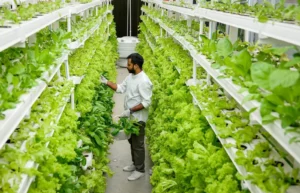
1. Precision Agriculture
Precision agriculture utilizes technology to optimize field-level management concerning crop farming. By employing tools like GPS, remote sensing, and data analytics, farmers can monitor and manage their fields with unprecedented accuracy.
Key Components:
- GPS Technology: Enables farmers to create precise maps of their fields, allowing for better planning and management.
- Remote Sensing: Involves the use of drones and satellites to monitor crop health, soil conditions, and weather patterns.
- Data Analytics: Helps in analyzing large sets of data to make informed decisions about planting, fertilizing, and harvesting.
Benefits:
- Increases crop yield and efficiency.
- Reduces waste and input costs.
- Enhances resource management and environmental sustainability.
2. Vertical Farming
Vertical farming involves growing crops in stacked layers, often in controlled indoor environments. This technique is especially beneficial in urban areas where space is limited.
Key Components:
- Hydroponics: Growing plants without soil, using mineral nutrient solutions in water.
- Aeroponics: Growing plants in an air or mist environment without the use of soil or aggregate medium.
- Aquaponics: Combining fish farming and plant cultivation in a symbiotic environment.
Benefits:
- Maximizes space utilization.
- Reduces water usage by up to 70% compared to traditional farming.
- Minimizes the need for pesticides and herbicides.
3. Hydroponics
Hydroponics is a method of growing plants using mineral nutrient solutions, in water, without soil. This technique is highly efficient and can be set up indoors, allowing for year-round production.
Key Components:
- Nutrient-Rich Water: Plants are fed with a solution containing all essential nutrients.
- Controlled Environment: Ensures optimal growth conditions regarding light, temperature, and humidity.
Benefits:
- Faster plant growth and higher yields.
- Requires less water compared to soil-based agriculture.
- Can be implemented in arid regions and urban settings.
4. Aquaponics
Aquaponics integrates aquaculture (raising fish) with hydroponics. In this system, fish waste provides an organic nutrient source for the plants, and the plants help to purify the water for the fish.
Key Components:
- Fish Tank: Home to the fish that produce waste.
- Grow Beds: Where plants are cultivated using the nutrient-rich water from the fish tank.
- Water Circulation System: Ensures the continuous flow of water between the fish tank and the grow beds.
Benefits:
- Creates a sustainable ecosystem.
- Produces both fish and plants.
- Reduces water and fertilizer usage.
5. Controlled Environment Agriculture (CEA)
Controlled Environment Agriculture (CEA) involves growing plants within a controlled environment to optimize horticultural practices. This includes greenhouses, indoor farms, and vertical farms.
Key Components:
- Climate Control Systems: Regulate temperature, humidity, and light.
- Automated Systems: Manage irrigation, nutrient delivery, and pest control.
- Energy-efficient Lighting: Uses LED lights to provide the necessary spectrum for plant growth.
Benefits:
- Year-round crop production.
- Protection from extreme weather conditions.
- Enhanced crop quality and consistency.
6. Genetic Engineering and CRISPR
Genetic engineering and CRISPR technology are being used to develop crops with desirable traits such as drought tolerance, pest resistance, and improved nutritional content.
Key Components:
- CRISPR-Cas9: A gene-editing tool that allows precise modifications to DNA.
- Genetically Modified Organisms (GMOs): Crops that have been altered using genetic engineering techniques.
Benefits:
- Increased crop resilience and yield.
- Reduced need for chemical inputs.
- Enhanced nutritional value of crops.
7. Soil Health Management
Maintaining and improving soil health is critical for sustainable agriculture. Techniques such as crop rotation, cover cropping, and no-till farming help preserve soil structure and fertility.
Key Components:
- Crop Rotation: Alternating different crops in the same field to prevent soil depletion.
- Cover Cropping: Planting cover crops to protect and enrich the soil.
- No-Till Farming: Reducing soil disturbance to maintain organic matter and prevent erosion.
Benefits:
- Improves soil fertility and structure.
- Reduces erosion and water runoff.
- Enhances biodiversity and ecosystem health.
8. Integrated Pest Management (IPM)
Integrated Pest Management (IPM) is a sustainable approach to managing pests that combines biological, cultural, physical, and chemical tools in a way that minimizes economic, health, and environmental risks.
Key Components:
- Biological Control: Using natural predators or parasites to control pests.
- Cultural Practices: Implementing crop rotation and sanitation measures to reduce pest habitat.
- Mechanical Control: Using traps and barriers to prevent pest access.
- Chemical Control: Applying pesticides only when necessary and in a targeted manner.
Benefits:
- Reduces reliance on chemical pesticides.
- Minimizes environmental impact.
- Promotes long-term pest control solutions.
9. Agroforestry
Agroforestry involves integrating trees and shrubs into agricultural landscapes. This practice enhances biodiversity, improves soil health, and provides additional income sources for farmers.
Key Components:
- Alley Cropping: Planting rows of trees with crops in between.
- Silvopasture: Combining forestry and grazing of domesticated animals.
- Windbreaks: Planting trees to reduce wind erosion and protect crops.
Benefits:
- Enhances biodiversity and ecosystem services.
- Improves soil structure and fertility.
- Provides additional products such as timber, fruit, and fodder.
10. Robotics and Automation
Robotics and automation are transforming modern agriculture by performing tasks such as planting, harvesting, and weeding with precision and efficiency.
Key Components:
- Autonomous Tractors: Equipped with GPS and sensors for precise field operations.
- Harvesting Robots: Use machine vision and AI to pick fruits and vegetables.
- Weeding Robots: Identify and remove weeds without harming crops.
Benefits:
- Reduces labor costs and increases efficiency.
- Enhances precision in field operations.
- Improves safety and working conditions for farmers.
Conclusion
Innovative farming techniques are essential for meeting the challenges of the 21st century. By adopting methods such as precision agriculture, vertical farming, and controlled environment agriculture, farmers can increase productivity, enhance sustainability, and ensure food security for a growing global population. As technology continues to advance, the agricultural sector will undoubtedly continue to evolve, offering new solutions and opportunities for farmers worldwide.

